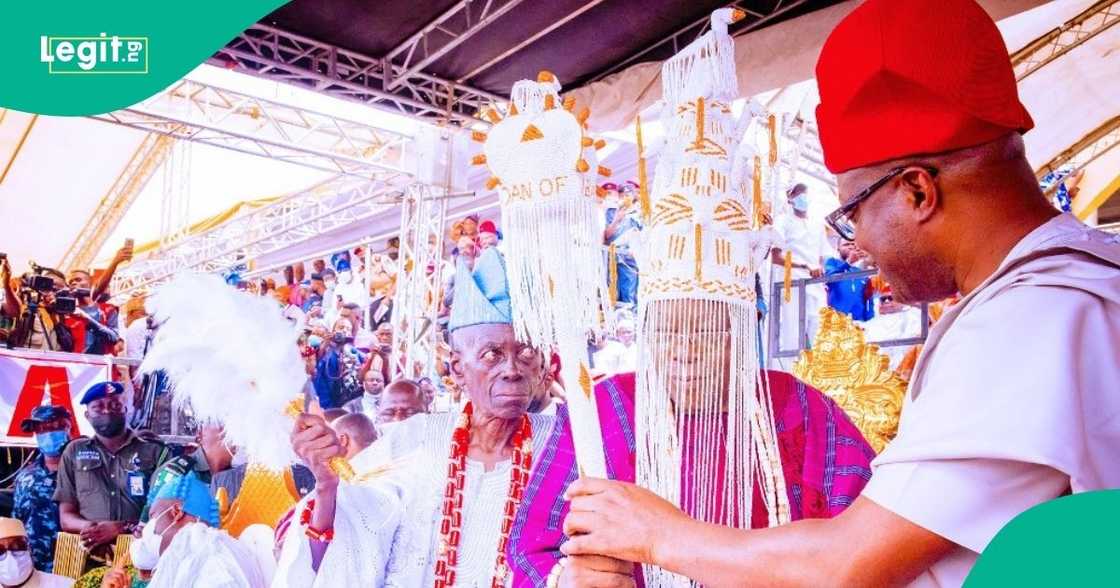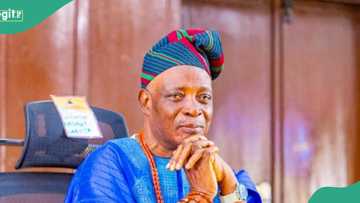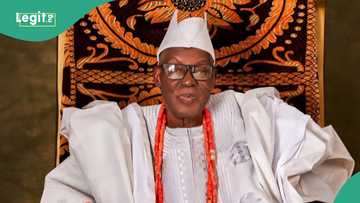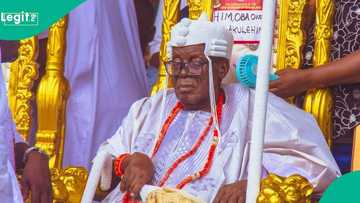Olubadan: 6 Things You Didn't Know About Obaship System in Ibadan, List Emerges
- The Ibadan Obaship system features two distinct succession lines, Civil and Military, with candidates ascending through over 20 chieftaincy stages in a rotational and merit-based structure
- Unlike other Yoruba towns, Ibadan’s throne isn’t limited to royal families; any qualified male indigene can become Olubadan by rising through either succession line
- The city has produced aged monarchs due to its lengthy promotion process, with most kings ascending the throne in their 70s or 80s, ensuring experienced leadership
Ibadan, the capital of Oyo state, is known for its rich culture and unique chieftaincy structure.
While most Yoruba towns follow a traditional royal lineage, the Ibadan obaship system stands out with a rotational and merit-based approach to selecting its monarch.

Source: Twitter
Below are six fascinating things you may not know about the Obaship system in Ibadan:
1. Olubadan ascension ladders
Ibadan’s Obaship structure operates with two clear paths to the throne: the Civil (Olubadan) line and the Military (Balogun) line. Each line begins with the title of Jagun, the lowest chieftaincy rank.
The Civil line contains 22 stages, while the Military line has 23 stages leading up to the Olubadan.
Progression through the ranks is strictly by seniority and occurs mostly through the demise of senior titleholders.
This well-structured process ensures a peaceful transition and succession devoid of the intense royal rivalries seen in other Yoruba kingdoms.
Chieftaincy Stages in the Civil Line (Olubadan or Egbe Agba)
22. Otun Olubadan
21. Osi Olubadan
20. Asipa Olubadan
19. Ekerin olubadan
18. Ekaarun Olubadan
17. Abese
16. Maye
15. Ẹkẹfa
14. Agba- Akin
13. Aare – Alasa
12. Ikọlaba
11. Asaju
10. Ayingun
9. Aare – Agọ
8. Laguna
7. Oota
6. Aare – Egbe – Omo
5. Gbonnka
4. Aare – Onibon
3. Bada
2. Ajia
1. Jagun
2. Civil and military lines rotate the throne

Source: Twitter
One of the most distinctive features of the Ibadan Obaship system is the rotation of the Olubadan throne between the Civil and Military lines.
When a monarch passes away, the next king is selected from the alternate line, ensuring fairness and balance in leadership succession.
For instance, the late Oba Moshood Lekan Balogun belonged to the Civil line. He was succeeded by Oba Olakulehin from the Military line.
This alternating method is strictly followed and has helped to maintain peace and predictability in Ibadan’s royal succession, Vanguard reported.
3. No specific royal house(s)
Unlike other Yoruba towns with established ruling houses, Ibadan has no specific royal families. Any male indigene of Ibadan who is appointed as Mogaji (head of a family compound) can, over time, climb the ranks and eventually become Olubadan.
This makes the system highly inclusive and merit-based. It provides equal opportunity to any qualified individual, regardless of direct royal bloodline, as long as he is a bona fide son of Ibadan and follows the proper ascension steps.
4. Promotion of lesser Obas
In 2017, during the administration of Governor Abiola Ajimobi, several high chiefs and baales in Ibadan were elevated to the status of Obas as part of efforts to modernise the chieftaincy system.
Though controversial, this reform was later revised under Governor Seyi Makinde.
By 2023, Makinde passed a law allowing these high chiefs to wear beaded crowns, restoring their Obaship titles.
Despite this elevation, it did not disrupt the traditional succession process of becoming Olubadan, making Ibadan perhaps the first Yoruba city to produce an Oba from among lesser Obas.
5. The system produces aged monarchs
Due to the long and structured process of ascension, Ibadan usually ends up with aged monarchs. Each step on the ladder takes years to climb, and promotions only occur upon vacancy due to death or elevation.
This results in kings ascending the throne often in their 70s or 80s. For example, the late Oba Olakulehin became Olubadan at the age of 84. His predecessor, Oba Lekan Balogun, also ascended at 79. While this may limit the length of reigns, it also ensures a deeply experienced leadership.
6. The longest-serving Olubadan reigned for 16 years
Despite most monarchs having short reigns due to their age at coronation, one notable exception was Oba Okunola Abaasi Alesinloye Isale Ijebu, who ruled from 1930 to 1946. He remains the longest-serving Olubadan in modern history, Nigerian Tribune reported.
In more recent times, Oba Saliu Adetunji ruled from 2016 to 2022, passing away at 93. His successor, Oba Lekan Balogun, reigned from 2022 until his death in 2024.
Oba Olakulehin succeeded him briefly before passing at age 90. While their reigns were short, they left lasting impacts on the city’s traditional and cultural landscape.
Nigerians react as Olubadan dies at 90
Previously, Legit.ng reported that the Olubadan of Ibadanland, His Imperial Majesty Oba Owolabi Olakulehin, has reportedly passed away.
Mixed reactions have trailed the death of His Imperial Majesty Oba Owolabi Olakulehin. Legit.ng compiled a few reactions from social media platform X (formerly known as Twitter).
Source: Legit.ng





